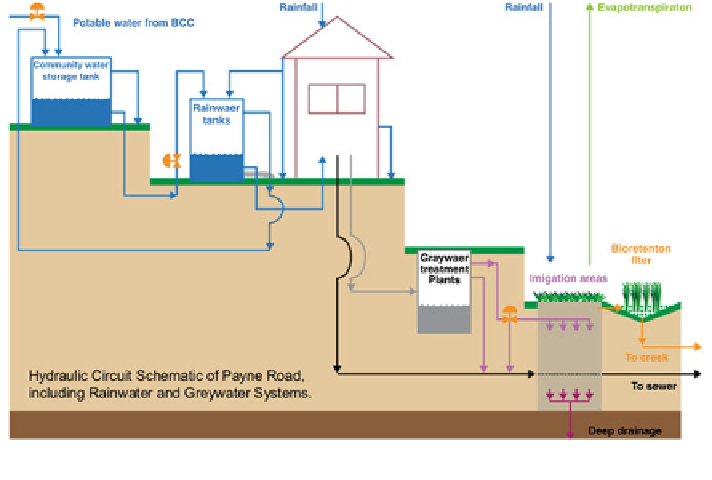Environmental Engineering Reference
In-Depth Information
Fig. 10 Water schematic for Payne Road (Source Davis and Farrelly
2009
)
s sub-
urban fringe demonstrates an integrated approach to water services that include
rainwater harvesting, greywater recycling and demand management. The decen-
tralised systems are integrated with the centralised system as rainwater tanks receive
back-up from the main supply and blackwater is discharged off-peak to an adjacent
sewer main (Davis and Farrelly
2009
) (Fig.
10
).
Description of the project: The Payne Road development in Brisbane
'
4.1 What Are the Main Features?
22 m
3
rainwater tank for
each household. There are two 75 m
3
communal tanks, located at the bottom of the
subdivision, designed for storage of household rainfall excess, provision for
Rainwater tanks: Each household is equipped with an 18
-
re-
fighting and future supply of households. The communal tanks were.
Greywater treatment: Greywater is treated by an aerobic composting system.
The systems are installed on individual houses and they convey treated water to
gardens via subsurface irrigation. Moisture sensors detect saturation levels and
excess treated greywater is discharged into the sewer (Gardner et al.
2006
).
Wastewater from kitchens and toilets is conveyed via low-in
ltration, reticulated
gravity sewerage to a communal sewer pump well. As the sewer main already
operates at peak
flow capacity, sewage from the development is withheld in a pump
well until it can be discharged during off-peak times into the main sewerage trunk
(Gardner et al.
2006
).

Search WWH ::

Custom Search